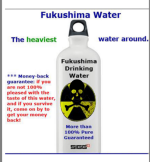The Japanese Government has provided the IAEA with a report that summarizes the events and highlights the progress related to recovery operations at the Fukushima Daiichi Nuclear Power Station. The IAEA provided its assessments, which are contained in full at the end of the report.
This assessment has been performed on aspects presented in the August 2022 report 'Events and highlights on the progress related to recovery operations at Fukushima Daiichi Nuclear Power Station'. It does not include recent developments that will be taken into consideration in a next report.
Improvements to the equipment for trial retrieval of fuel debris from Unit 2
The IAEA acknowledges the progress made and considers that this may enable future activities towards the trial retrieval of fuel debris from Unit 2.
Measurement of deposit thickness in the PCV of Unit 1
The IAEA acknowledges the progress made on the visual investigation of the in-vessel conditions in Unit 1 and considers it may contribute to the planning and implementation of a concrete decommissioning work plan in the future.
Management of ALPS treated water
The IAEA acknowledges that TEPCO has revised the assessment of radiological impacts on humans and the environment taking into account IAEA comments1/. The review of this revised impact assessment by the IAEA task force is ongoing.
Sea area monitoring results
Based on the information provided by Japan, the IAEA acknowledges that no significant changes were observed in the monitoring results for seawater, sediment and marine biota, including fishery products, during the period covered by this report. The levels measured by Japan in the marine environment are low and relatively stable. For the purpose of public reassurance, the IAEA encourages the continuation of sea area monitoring. Furthermore, the IAEA considers that the ongoing data quality assurance programme that is in place is key for ensuring the accuracy and the quality of the results of the monitoring programme. It also enhances transparency and contributes to building stakeholders’ confidence.
Food products
Based on the information provided by Japan, the situation regarding the safety of the food supply, fishery and agricultural production continues to remain stable. Food restrictions continue to be revised and updated as necessary in line with food monitoring results. Many thousands of food and fishery samples were collected and analyzed over the reporting period and this indicates the continued vigilance of the authorities in Japan and their commitment to protecting consumers and trade. Food monitoring, dietary surveys, appropriate regulatory action and public communication are helping to maintain confidence in the safety of the food supply.
Based on the information that has been made available from Japan, the Joint FAO/IAEA Centre understands that measures to monitor and respond to issues regarding radionuclide contamination of food are appropriate, and that the food supply chain is controlled effectively by the relevant authorities and that the public food supply is safe.
...














